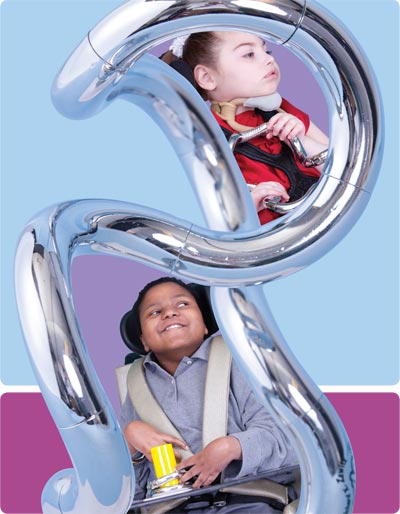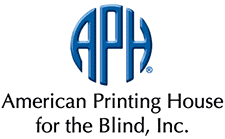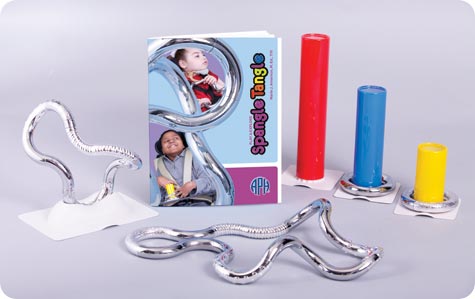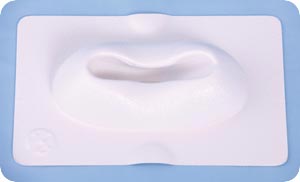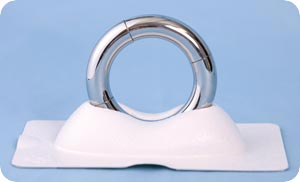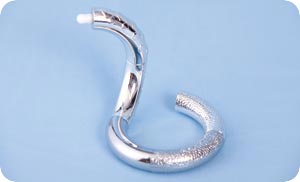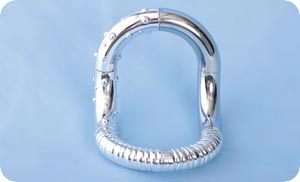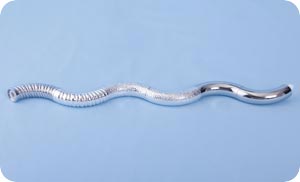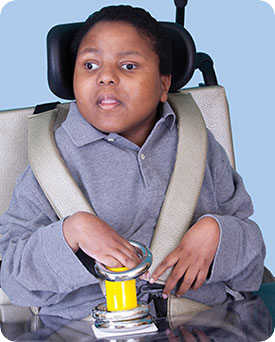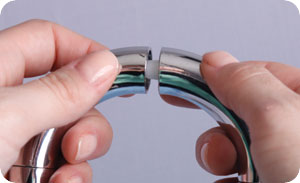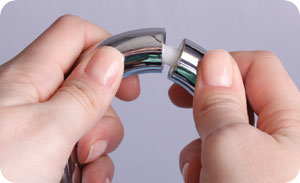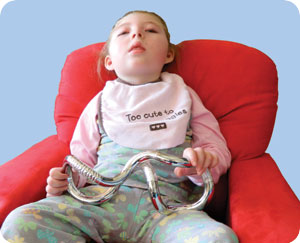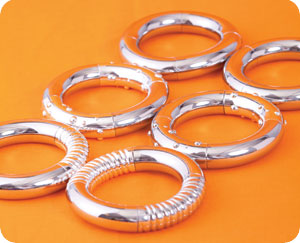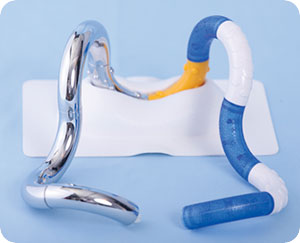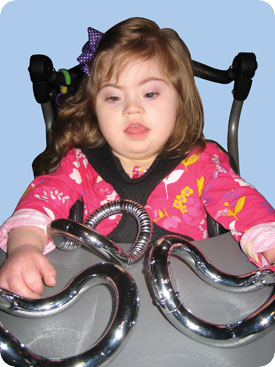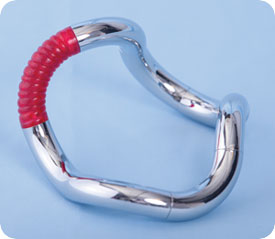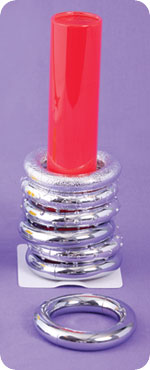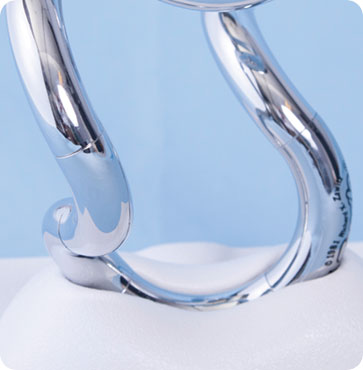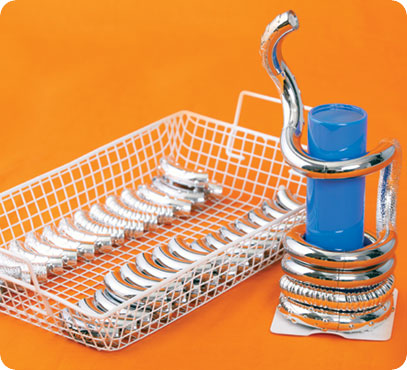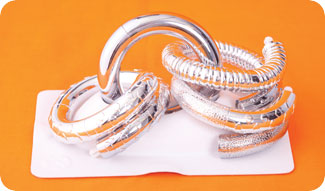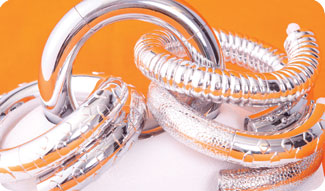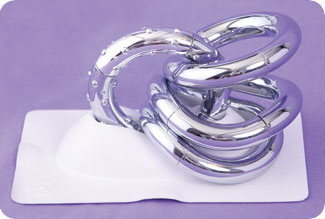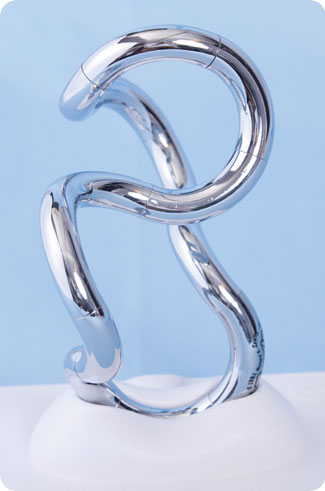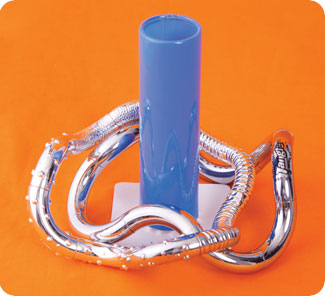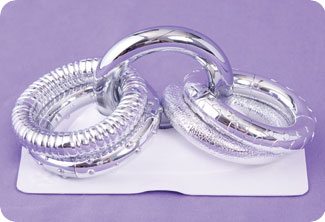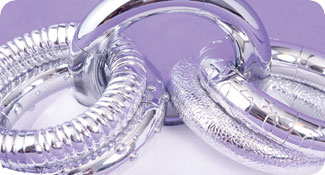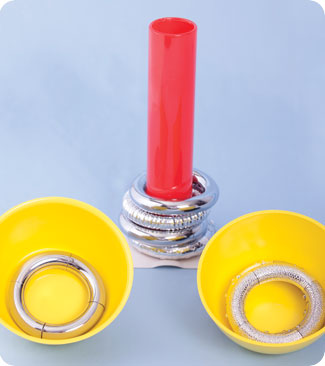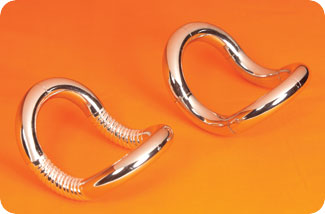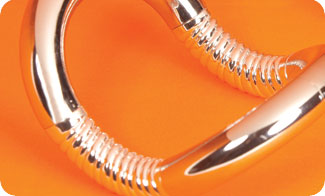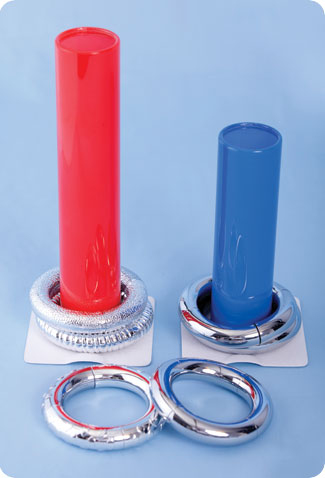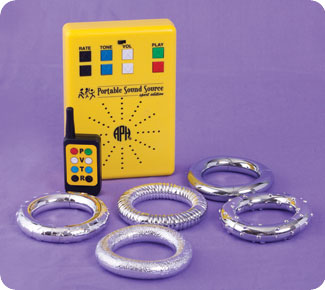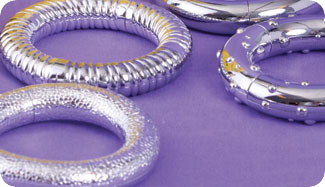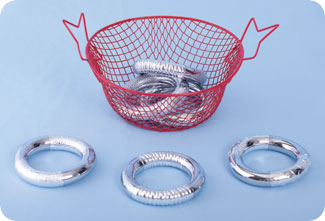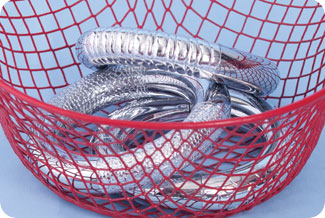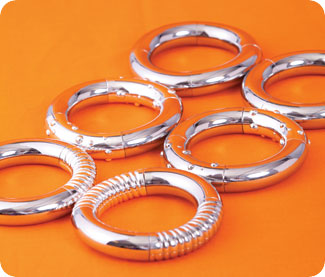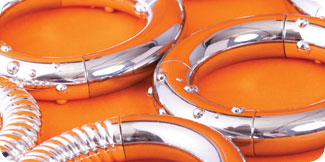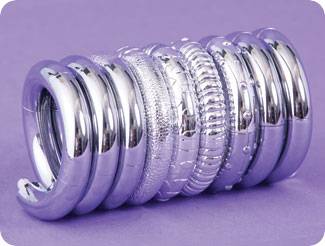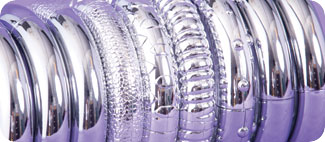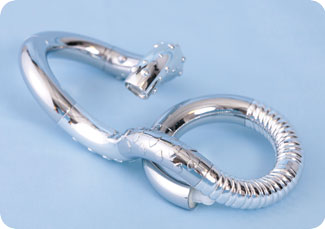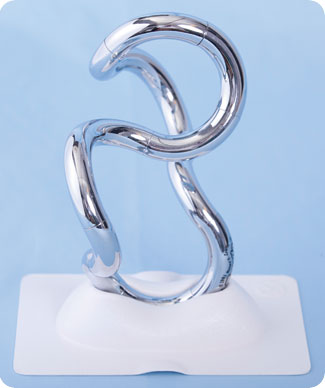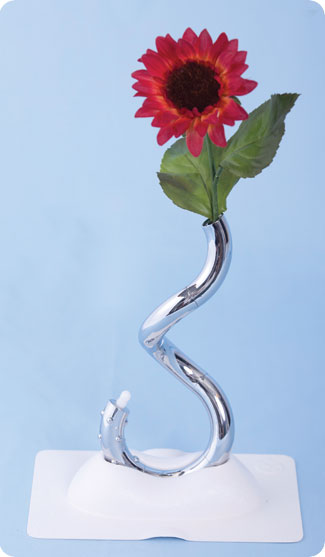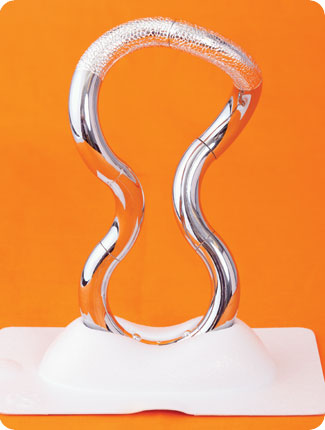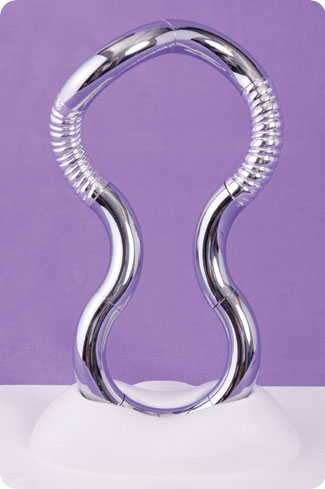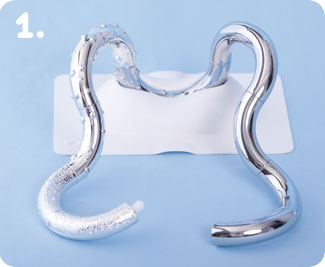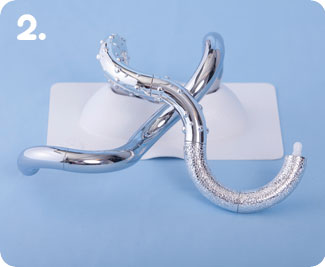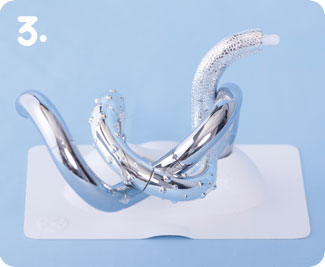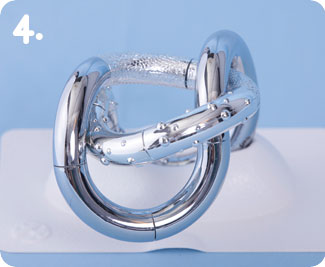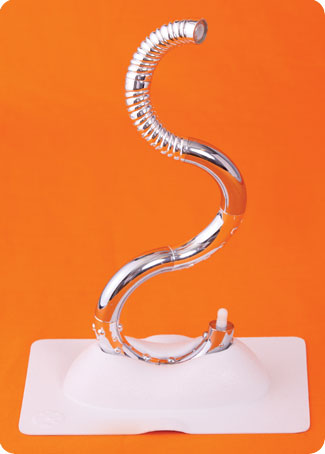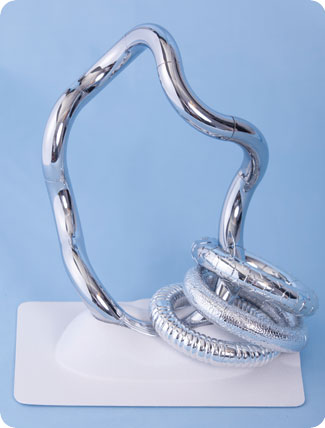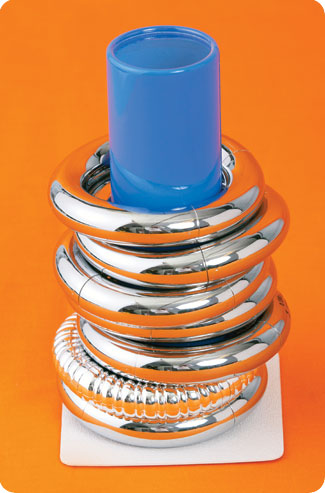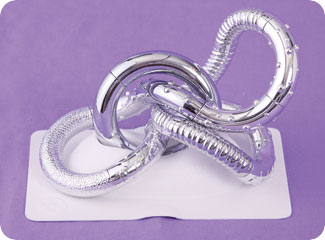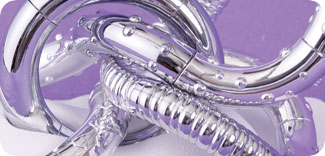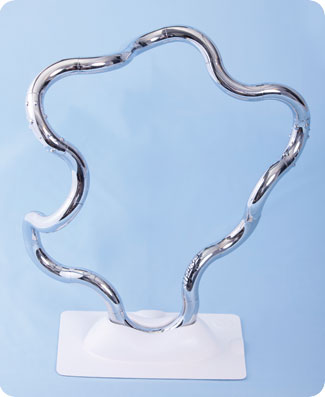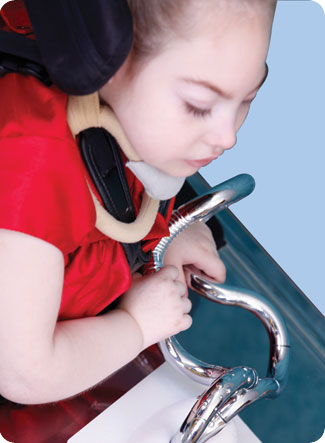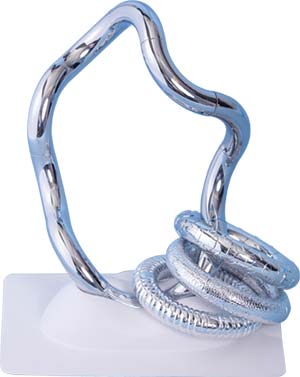Spangle Tangle - Play & Explore
Marie J. Amerson, M.Ed., TVI
Copyright © 2013
American Printing House for the Blind, Inc.
Louisville, KY 40206-0085
All rights reserved.
Printed in the United States of America
This publication is protected by Copyright and permission should be obtained from the publisher prior to any reproduction, storage in a retrieval system, or transmission in any form or by any means, electronic, mechanical, photocopying, recording, or otherwise.
For information regarding permissions, write to:
American Printing House for the Blind, Inc.
Resource Services
1839 Frankfort Avenue
Louisville, KY 40206-0085
Catalog Number 1-08755-00 (Kit)
7-08755-00 (Large Print Guidebook with CD)
About the Author
Marie J. Amerson began working with students who have multiple disabilities after she graduated with a degree in Special Education (1974). She worked in a community facility that served students with severe intellectual disabilities and later took a position as a teacher of students with severe to profound intellectual disabilities. Her students ranged in age from infants to adolescents.
When Amerson moved to Macon, Georgia, in 1979, she took a job with the Georgia Academy for the Blind (GAB) to teach students with multiple disabilities including visual impairment. Amerson obtained certification in the area of visual impairment and received a Masters Degree in Interrelated Special Education. Her students ranged in age from 5-12 years old.
After Amerson participated in the Utah Ski-Hi INSITE training program, she became a Parent Advisor for GAB's Georgia PINES Program. Amerson moved from the classroom at GAB into an outreach and resource position. She maintained a connection with the school's preschool classroom and assisted with evaluation of young students with multiple disabilities.
Since retiring from GAB, Amerson continues to work in the field as a consultant, and she coordinates a braille transcriber training program in the area near her home.
Project Contributors
Message to the Readers
Teachers, parents, and children know that active learning is FUN! The American Printing House for the Blind began selling our texture-color specific Tangle® Toy in 2005, and it has proven to be a great toy and learning tool. Tangle Toys provide opportunities for learners to improve visual and tactile attention, communication, and creativity. Through specially designed activities, the learner develops motor, problem solving, cognitive, self-care, social, and pre-braille skills. And, they get to have FUN!
The original Tangle Toy, created by artist Richard Zawitz, is based on the Tibetan Infinite Knot. His study of the Knot inspired him to create his world renowned sculpture titled Infinite Sculpture. Now available in plastic, over 100 million Tangle units have been sold since 1982. APH is happy to continue our relationship with Tangle Creations and thanks them for creating the Spangle Tangle per our specifications.
Anyone can learn and have fun with the Spangle Tangle, but it is designed specifically for children who have blindness and experience difficulty grasping and holding objects. The product includes the Tangle Stand, which is an accompanying support stand that allows learners to explore and play with the toy without it falling off their wheelchair tray, and three Tube Stands to use to play games and create sculptures. The Spangle Tangle is especially designed for children for whom haptic exploration may be their best—and perhaps only—way to gain information about their world.
Some of the activities in this book are adapted for wheelchair use from APH's The Tangle Book by Marie Amerson. Additional activities have been written specifically for the Spangle Tangle Kit.
Your Spangle Tangle Kit contains
Spangle Terms You Need to Know
We hope you enjoy implementing the activities in this book, and we encourage you to create new ones to share with APH, teachers, parents, and children.
Tristan Pierce
Multiple Disabilities Project Leader
Note to reader: If a photo presents additional information than what is given in the photo caption or activity instructions, a photo description is provided.
Introduction
Children learn by doing; they interact with their environment in order to develop motor skills and to process information about the world they experience. This usually happens casually, as children watch the world around them. Children who have vision loss do not gather as much information incidentally about the environment as their sighted peers; add disabilities that affect mobility and movement, and children are further limited in their abilityto interact independently with the environment.
A child's early interactions with the environment are viewed as play, and interesting toys provide a target for a child's attention. Though the primary objective of play and toys is FUN, they also open the opportunity for service providers (parents, teachers, and others) to introduce learning objectives. For a child with visual and multiple impairments, it is a special challenge to introduce new experiences without overloading the child's sensory system.
With its infinite knot shapes and shiny, textured surface, the Spangle Tangle has many features that are ideal in the selection of toys for children with visual impairments—including visual and tactual appeal, sturdiness, and flexibility of use. The "spangle" of the toy attracts a child who has some vision. However, when a child has no vision to partner with touch for exploration, that child must depend on haptic perception alone for object recognition. When a child's hands and feet do not work well for exploration because of central nervous system or peripheral nerve damage, he or she needs to use his or her mouth to get information about the properties of the object regardless of chronological age or cognitive age (Smith, 2012). The Spangle Tangle and the accompanying Tangle Stand and Tube Stands are designed to accommodate a child who needs to use his or her mouth to gain knowledge about the object and activity. The guidebook activities encourage a child to discover and explore shape (curvature), edges, and textures.
Each Spangle Tangle is made of 18 pop-apart segments. It is easy to create a variety of patterns using the five distinct textures. The Tangle Stand offers a way to keep the movable toy stationary on a table or wheelchair tray while the child interacts with it.
Segments of the Spangle Tangle fit together tightly. Children—especially those with motor impairments—are not expected to assemble or disassemble parts. Service providers and learning partners are encouraged to assemble, disassemble, fiddle with, create, and enjoy the Spangle Tangle as they prepare to introduce the delightful toy to children.
Young Children With Special Needs
Infants without vision may not naturally regard their hands or bring them together at midline. The Spangle Tangle is useful to help a young child become aware of both hands and can be used to help the child practice movement patterns useful for later learning. It is a movable yet "stay-in-place" tool for haptic exploration, using the hands, mouth, or feet. To accommodate the specific needs of a child, adjust the number of segments and use certain textures.
- A very small or young child may be more successful manipulating a 10-segment loop as opposed to a heavier 18-segment loop.
- A child with low vision may be more successful when doing an activity with a bright covering on the wheelchair tray and/or when the child wears a colorful shirt that reflects on the toy.
- A child with no vision may learn tactual discrimination better when he explores (perhaps orally) a toy that has distinct contrasting textures, (e.g., smooth and bumps or spiral and bumps).
- A child with no vision and an intellectual disability may learn and enjoy an activity better when simplicity is used (i.e., start out using one texture, slowly introduce a second texture, and gradually build complexity into games and activities).
- A child with no vision and low muscle tone may successfully manipulate a Spangle Tangle made with fewer segments and attached to the Tangle Stand; the stand prevents the toy from falling off the work surface.
Closely observe a child's responses to the Spangle Tangle and expand activities accordingly. Adjust activities for the child's chronological age and use age-appropriate language to describe the game. Combine the Spangle Tangle with the APH Tangle Toy (#1-08750-00) for more visual options.
CAUTION: The Spangle Tangle is reflective. If using the toy in a room that has a ceiling fan in use, monitor children who have vision and are prone to seizures or migraines.
Children With Cortical Visual Impairment
The Spangle Tangle activities designed for children with ocular forms of visual impairment or blindness may be modified so they are appropriate for children with cortical visual impairment (CVI). The following guidelines take the unique visual and behavioral characteristics of CVI into consideration. They are adapted from The Tangle Book (2005).
- If the child demonstrates visual field preferences, initially present the Spangle Tangle in the dominant viewing field.
- If the child gains visual attention most consistently through movement, present the Spangle Tangle in the child's dominant peripheral field and slowly move it back and forth to help establish attention to the toy.
- If the child demonstrates latency, allow ample wait time for the child to visually locate the Spangle Tangle.
- If the child demonstrates a color preference, partner the Spangle Tangle with segments of the preferred color from the APH Tangle Toy Kit (#1-08750-00) or dress the child in that color so the clothing reflects in the Spangle Tangle.
- If the child demonstrates light gazing, position the Spangle Tangle so it reflects any natural or artificial light.
- If the child is nonresponsive to complexity,
- keep the background simple,
- avoid using verbal direction or praise while the child is looking at the toy,
- select segments so the assembled Spangle Tangle has no more than one or two textures, and
- recognize the child may not use vision while exploring the textures of the segments.
- If the child uses visual-motor skills incongruently, remember that looking and reaching may occur as separate events rather than as a single action.
- If the child demonstrates resistance to novelty, he or she may not visually attend to the toy; provide gradual experience with the object over time, use favorite color and reflected light (as appropriate to the individual child), and monitor the complexity of the activity to reduce its novelty.
- If the child has difficulty with distance viewing, place the Spangle Tangle within inches of the child's face to offer the best opportunity for him or her to see.
Play and Explore: Games and Activities
The following games and activities are provided as springboard ideas to use the Spangle Tangle with children who have visual and multiple impairments. Unlike APH's Tangle Toy, activities for the Spangle Tangle do not require the learner to pull apart or connect the segments. If the learner is capable and ready for that challenge, please refer to APH's Tangle Toy Kit (#1-08750-00) for additional games and activities.
The Tangle Stand—included with the kit—sticks on any flat smooth surface; press it down on a table or wheelchair tray. To insert the Spangle Tangle into the stand, push the open end of a segment into the cradle opening. Continue to thread the strand through the cradle. You can connect segments when at least two segments are threaded all the way through the cradle. You can also pop a connected segment into the cradle by pushing down hard on the loop.
The bumpy segments (B) maintain their position in the Tangle Stand better than some other textured segments and work especially well to form a 4-segment ring that doesn't move around too much.
The Tube Stands also stick on tables and wheelchair trays. Try the various lengths of tubes to accommodate the abilities of individual children or particular challenges of an activity. Recognize that toys can encourage interactive play and utilize the fascination of the twists and loops to engage the child with peers.
Coil/Strand Sort
Corkscrew Twist
Infinity
Loop Toss
Page Turn
Ring Sort
Rocking Round Robin
Short/Tall Stack
Skyline
Spangle Bangle Hunt
Spangle Bangle Match Point
Spangle Bangle Partners
Spangle Coil
Spangle Sculpture
Spangle Steering Joystick Ride
Spangle Steering Wheel Ride
Spangle Tangle Knot
Stir the Pot (or Song Time)
Tangle Tracking
Thread and Count
Treasure Hunt
Twist and Shape
Twist and Tangle Reflections
Bibliography
Amerson, M. (2005). The Tangle book. Louisville, KY: American Printing House for the Blind.
Smith, M. (2012). SAM: Symbols and meaning [Guidebook]. Louisville, KY: American Printing House for the Blind.
Acknowledgements
1839 Frankfort Avenue · P.O. Box 6085
Louisville, Kentucky 40206-0085
502-895-2405 · 800-223-1839
Fax: 502-899-2284 · info@aph.org
www.aph.org · http://shop.aph.org
Catalog Number: 7-08755-00
